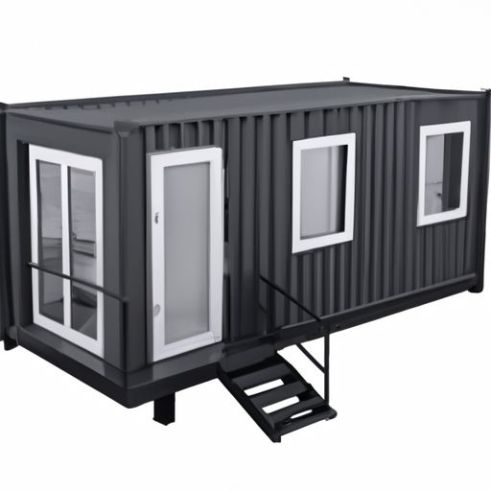Table of Contents
Pros and Cons of Prefab Container Homes
Prefab container homes have gained popularity in recent years as a cost-effective and sustainable housing option. These homes are constructed off-site in a factory setting and then transported to the desired location for assembly. While there are many benefits to choosing a prefab container home, there are also some drawbacks to consider.
One of the main advantages of prefab container homes is their affordability. These homes are typically much cheaper to build than traditional stick-built homes, making them an attractive option for those on a budget. Additionally, the construction process is much quicker, which can save both time and money in the long run.

Another benefit of prefab container homes is their sustainability. By repurposing shipping Containers that would otherwise be discarded, these homes are a more environmentally friendly housing option. Additionally, many prefab container homes are designed to be energy-efficient, further reducing their environmental impact.
Prefab container homes are also highly customizable. With a wide range of design options available, homeowners can create a unique living space that suits their needs and preferences. From layout to finishes, there are endless possibilities when it comes to designing a prefab container home.
However, there are some drawbacks to consider when it comes to prefab container homes. One of the main concerns is the limited space that these homes offer. While some designs can be expanded by connecting multiple containers, the overall square footage is often smaller than that of a traditional home.
Another potential drawback is the stigma associated with prefab homes. Some people may view prefab container homes as less desirable or lower quality than traditional homes, which can impact resale value and overall perception.
Additionally, the process of obtaining permits for a prefab container home can be more complicated than for a traditional home. Zoning regulations and building codes may vary depending on the location, which can add time and cost to the construction process.
Despite these drawbacks, prefab container homes offer a unique and innovative housing option for those looking to downsize, reduce their environmental impact, or simply try something different. With careful planning and consideration, prefab container homes can be a practical and stylish choice for modern living.
In conclusion, prefab container homes have both pros and cons that should be weighed carefully before making a decision. While they offer affordability, sustainability, and customization options, they also come with limitations in terms of space, perception, and permitting. Ultimately, the choice to build a prefab container home will depend on individual preferences and priorities.
Sustainable Design Trends in Mobile Potable Modular Container Tiny Houses
Prefab container homes have become a popular choice for those looking for sustainable and affordable housing options. These mobile potable modular container tiny houses offer a unique solution to the housing crisis, providing a quick and cost-effective way to create a comfortable living space. In China, Container Houses have gained popularity due to their versatility and eco-friendly design.
One of the key advantages of prefab container homes is their portability. These homes can be easily transported and assembled on-site, making them ideal for those who need a temporary or mobile housing solution. The modular design of container homes allows for easy customization, with the ability to add or remove modules as needed. This flexibility makes container homes a practical choice for a variety of uses, from temporary housing for disaster relief to permanent residences.
In addition to their portability, prefab container homes are also a sustainable housing option. By repurposing shipping containers, these homes help reduce waste and minimize the environmental impact of construction. Container homes can also be designed to be energy-efficient, with features such as Solar Panels, rainwater harvesting systems, and green roofs. These sustainable design elements not only reduce the carbon footprint of the home but also help lower utility costs for the homeowner.
Luxury detachable container houses take sustainable design to the next level, offering high-end finishes and amenities in a compact and eco-friendly package. These homes are designed to be both stylish and functional, with modern interiors and innovative design features. From sleek kitchens to spa-like bathrooms, luxury container homes offer all the comforts of a traditional home in a smaller footprint.
CGCH mobile homes are another innovative solution in the world of container housing. These homes are designed to be easily transportable, with the ability to be moved to different locations as needed. CGCH mobile homes are ideal for those who need a flexible housing solution, whether for work, travel, or temporary living arrangements. These homes can be customized to meet the specific needs of the homeowner, with options for additional modules, decks, and other features.
Overall, sustainable design trends in mobile potable modular container tiny houses are revolutionizing the way we think about housing. These homes offer a practical and eco-friendly solution to the housing crisis, providing a comfortable and affordable living space for a variety of needs. From basic container homes to luxury detachable houses, there is a container home option to suit every lifestyle and budget. With their portability, sustainability, and versatility, prefab container homes are a smart choice for those looking for a modern and sustainable housing solution.
